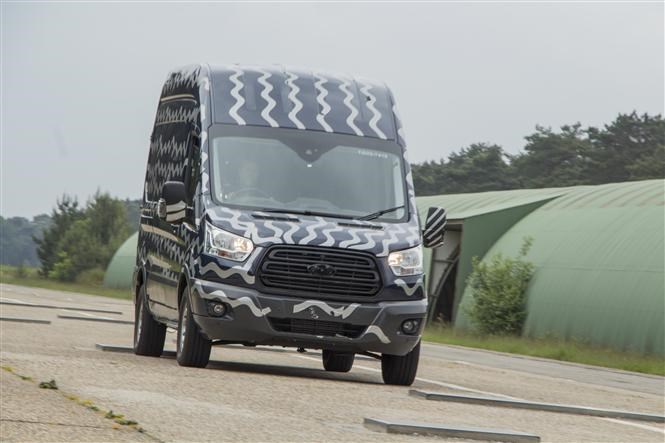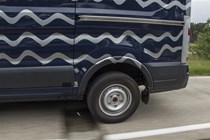Reliability is one of van buyers’ biggest concerns; after all, the longer their vehicle is off the road the more business they stand to lose.
To make sure the Transit is a man-enough van to keep going no matter how badly it’s treated, pre-production prototypes underwent the equivalent of 6.8 million miles of testing.
As well as racking up miles on the road, they also endured all kinds of torture at Ford’s Lommel proving ground, a remote testing facility tucked away in Belgian forest near the Dutch border.
We went to Lommel’s test ground to experience the tests for ourselves and to see how Ford ensures the Transit can be as reliable as possible for its customers.

The tests:
Ford says that in the six months a durability vehicle is tested at Lommel it undergoes the equivalent of 10 years of hard use.
Based on data gathered from real-life customers, the tests are many and varied. First on the menu is powertrain testing.
Powertrain tests
We begin with figure of eights, which means sticking the van in first gear and turning at full lock in both directions at speed to wear out the wheel bearings, joints and suspension components.
To strain engines and transmissions, the vans also tackle the steep slopes pictured below 2,900 times during six months’ testing.
Our van has a 500kg load but the durability vehicles usually do the test at maximum gross vehicle weight, moved onto different axles for different tests.
Sometimes they also tow heavily-laden trailers, and Kevin Strutt, Ford’s Commercial Vehicle Durability Supervisor, says they’ve had difficulty getting them to survive the tests. After going through ‘just about every trailer manufacturer in Europe’, the test team ended up making their own using Transit rear axles and brakes.
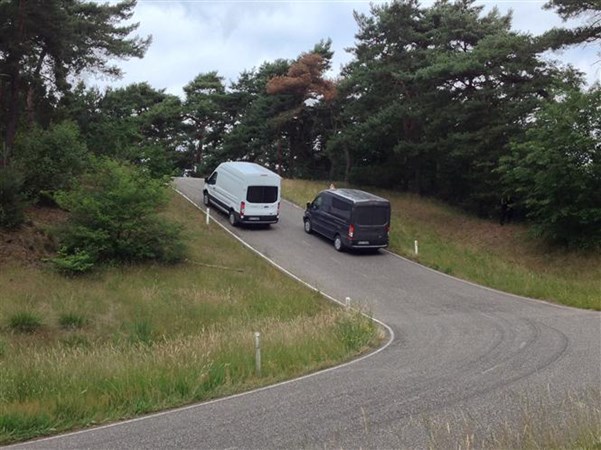
From the gradients we’re onto what looks like a gravel rally stage, testing the ABS by making emergency stops, the traction control by making full bore starts and the stability control by attacking corners at speed.
In between tests we start and stop the engine, turn the steering lock-to-lock and change down through the gears at prescribed revs to inflict maximum wear on the transmission.
As well as high-speed testing – Autobahn-spec Transits sit at full throttle on Lommel’s banked bowl for 90 minutes at a time (a test for the driver too, with a crash helmet mandatory and no air-con running allowed) – there is low-speed work too.
A ‘city running’ test aims to clog the particulate filter by running at low speed for extended periods with the engine on tickover.

Corrosion tests
Vans have to battle the elements just as much as heavy-handed drivers, so Lommel also includes a salt spray test, where the vans are pelted with one-percent solution saltwater (around a third the concentration of seawater) and a mud bath, which they drive through around 300 times each.
It’s not just any old mud. Made to a certain specification (down to the size of the grains of silt used) it’s also sent to Michigan to be used at the test facility there, too. Clearly the ‘One Ford’ policy extends to mud as well as vehicles.
Once the Transits are dirty, they stay that way. ‘We never clean the durability vehicles. Ever’, Strutt says.
When the Transits leave the track, the punishment doesn’t stop. Most vehicles at Lommel spend four hours on the track and 20 hours in the corrosion chamber, a 50°C, 95-percent humidity pressure cooker that produces roughly a six-year level of corrosion after three months. That continues every day for six months, non-stop.
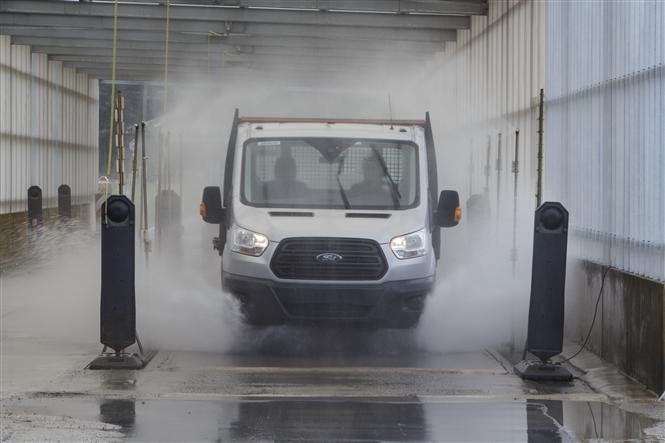
Structural tests
Lastly, it’s time for the violent stuff. Although in the real world you might hit a bad pothole maybe once a week at most, the Lommel vehicles clatter into simulated ones well over 5,000 times during their six months of punishment.
They also thump up and down kerb stones 1,875 times and spend plenty of time on a stretch ironically called the ‘comfort road’ to test the ride quality.
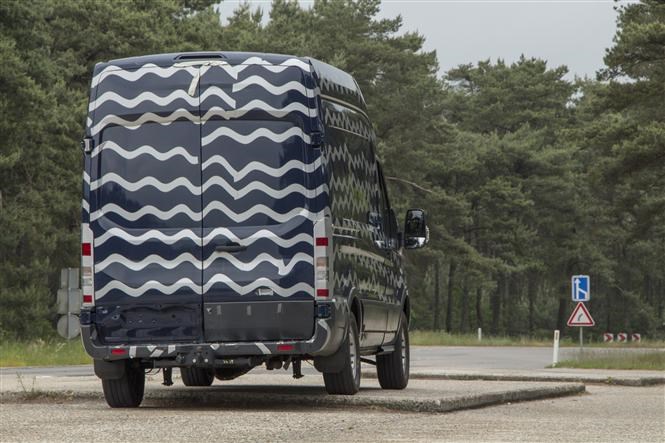
The result:
It’s down to these rigorous tests that the new two-tonne Transit can boast beefier ball joints, stronger CV joints, greater use of high-strength steel and over 100 other improvements over the previous-generation model.
Given competitor vehicles are also benchmarked at Lommel, Ford says it is confident the Transit is ‘more than up there with the best’, and should prove more than capable of coping with the rough and tumble of everyday business use.
To read the full Ford Transit review click here.
Just so you know, we may receive a commission or other compensation from the links on this website - read why you should trust us.


